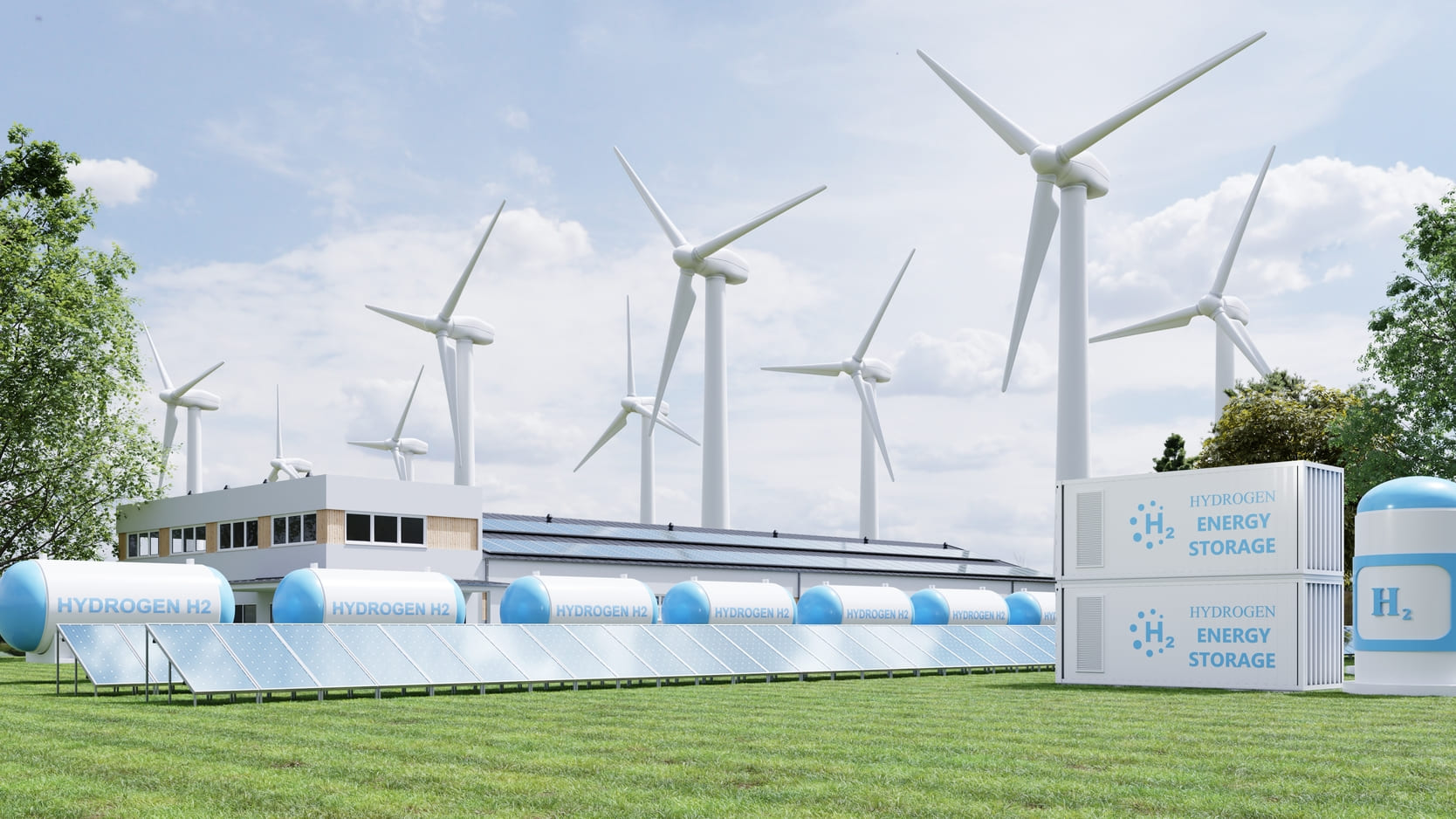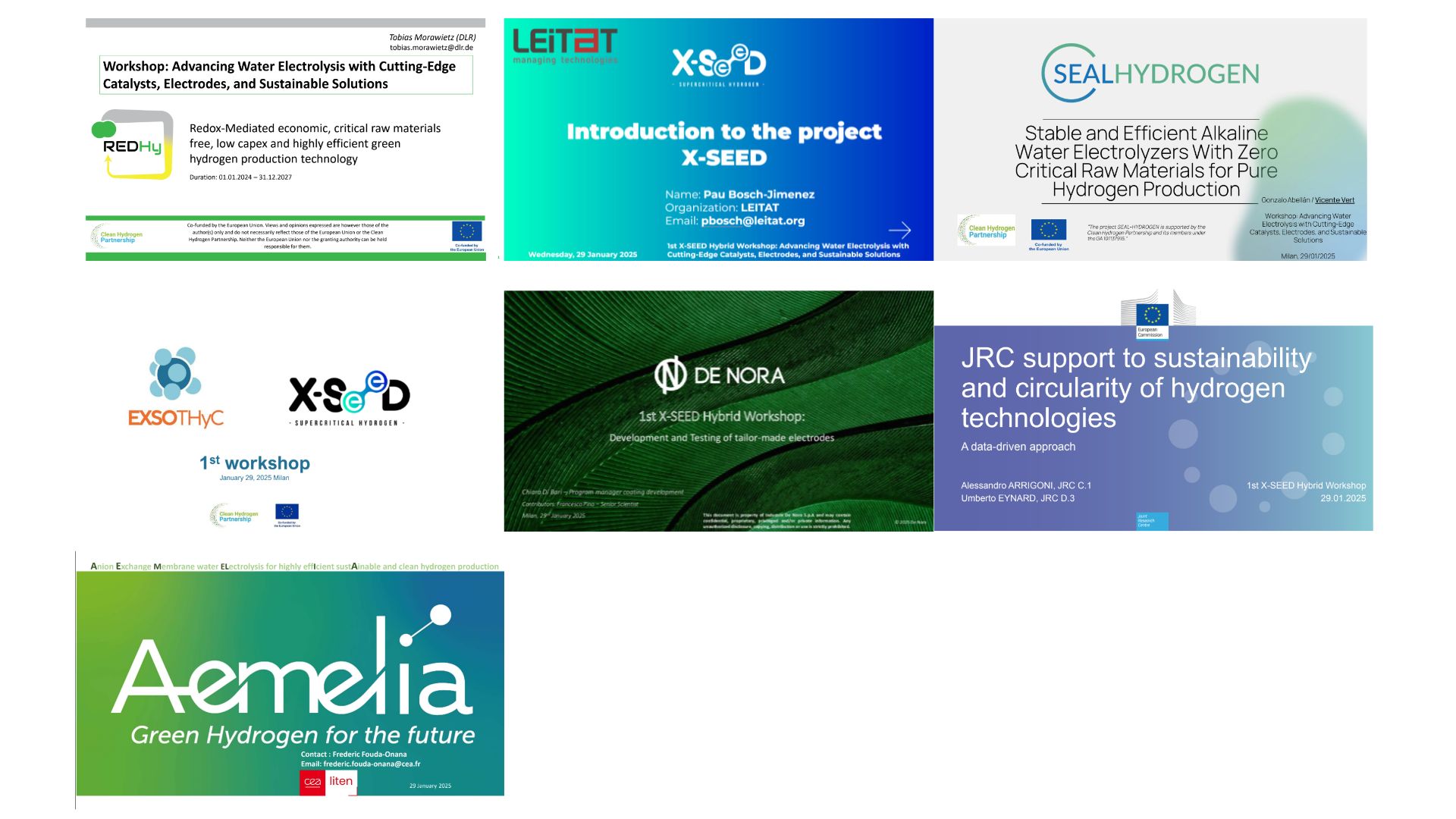Electrolysis
Renewable H2 is obtained mainly through electrolysis. Water electrolysis is an electrochemical process that involves the use of electrical energy to split water into H2 and oxygen. The overall reaction can be expressed as:
𝐻2𝑂(𝑙)→0.5 𝑂2(𝑔) + 𝐻2(𝑔).
Here is a breakdown of the voltage required for water electrolysis in an easier to understand way:
The Ideal Scenario: the minimum voltage theoretically needed to split water in a perfect system it is called Reversible Potential (Erev). It’s like the bare minimum amount of energy required to get the reaction going. At room temperature (25°C), this value is around 1.23 V.
The Reality: Splitting water using electrolysis actually absorbs heat, it is endothermic reaction. This takes into account the extra energy required to keep things at a constant temperature. For that a slightly higher voltage than the reversible potential must be applied and this voltage is called Enthalpic Voltage (Eth), which is 1.48 V under standard conditions. However, in practice, to perform electrolysis efficiently, you need to apply a voltage higher than the Eth. When the voltage is above this threshold, the reaction becomes exothermic, meaning it releases heat. This excess heat needs to be removed to maintain a stable temperature.
So, while the ideal scenario might suggest a lower voltage, also to have higher energy efficiency, real-world electrolysis requires a bit more electrical push to account for the heat needed to keep things running smoothly. One important aspect is that the Erev and Eth are dependent on the operation temperature as the following scheme shows, and this has impact on the energy efficiency of electrolysis.
Reversible and thermo-neutral voltage for water electrolysis as a function of temperature at a pressure of 1 bar.
Schem from reference Mori, Mitja, et al. “Integral characteristics of hydrogen production in alkaline electrolysers.” Strojniški vestnik-Journal of Mechanical Engineering 59.10 (2013): 585-594.
Electrolyzer types and performance targets
There are several types of electrolysers: alkaline (AWEL), proton exchange membrane (PEMEL), solid oxide (SOEL), anion exchange membrane (AEMEL) at different stages of development and implementation. The AWEL and PEMEL are already commercial but have three main bottlenecks: high production costs (5-8 €/kg H2), limited efficiencies (> 50 kWh/kg H2) and limited industrial manufacturing capacity. Moreover, the use of critical raw materials or other materials with sustainability or environmental concerns is widespread. To overcome these challenges, it is important to diversify the technology portfolio as well as develop and invest in technologies that are currently at low TRL but are expected to have competitive production cost (2-3 €/kg H2), increased efficiency (< 48 kWh/kg H2), improved durability and improved dynamic operation (connection to renewables), as it is the case of X-SEED electrolyzer.
| AWEL | PEMEL | AEMEL | SOEL |
| Advantages | |||
| Mature technology Catalyst without PGM High stability CAPEX cost low At scale of MW. | Commercial technology High production rate High H2 pressure and quality Dynamic operation and fast starting time. | Catalyst without PGM Noncorrosive electrolyte CAPEX cost low Dynamic operation and fast starting time. | High current densities High energy efficiency Low-cost materials and low CAPEX. |
| Disadvantages | |||
| Low current density Limited energy efficiency Low H2 purity and pressure Very corrosive electrolyte (6 M KOH). | Use of PGM catalysts High CAPEX cos tLimited stability | Non mature technology under development Low current density Low stability of the membrane. | Non mature technology High temperature (>800º) Low H2 output pressure High startup and cooldown Dynamic operation limited. |
References to go further:
Mori, Mitja, et al. “Integral characteristics of hydrogen production in alkaline electrolysers.” Strojniški vestnik-Journal of Mechanical Engineering 59.10 (2013): 585-594.
Global Hydrogen Review 2023 – Analysis – IEA
Tenhumberg, Nils, and Karsten Büker. “Ecological and economic evaluation of hydrogen production by different water electrolysis technologies.” Chemie Ingenieur Technik 92.10 (2020): 1586-1595.
Strategic Research and Innovation Agenda 2021 – 2027. CLEAN HYDROGEN JOINT UNDERTAKING Clean Hydrogen JU SRIA – approved by GB – clean for publication (ID 13246486).pdf (europa.eu)
Green hydrogen cost reduction: Scaling up electrolysers to meet the 1.5C climate goal (irena.org)
Vincent, Immanuel, and Dmitri Bessarabov. “Low cost hydrogen production by anion exchange membrane electrolysis: A review.” Renewable and Sustainable Energy Reviews 81 (2018): 1690-1704.



